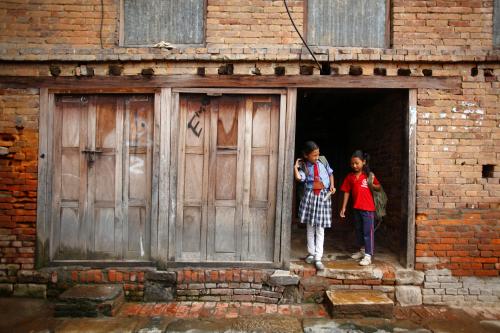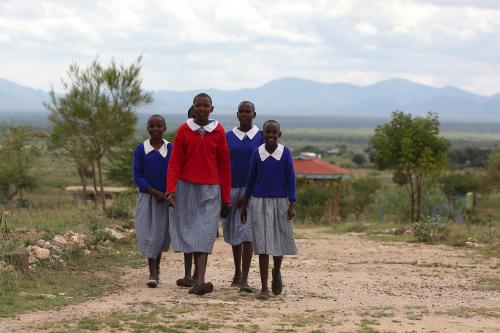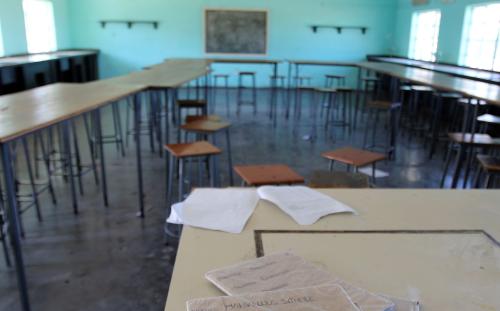Over the 16 years that I have worked with girls and young women, I’ve observed the many barriers that prevent them from taking full advantage of basic education. These obstacles include early marriage, limited household capacity to meet education expenses, and inadequate sanitary supplies to accommodate girls’ menstrual cycles.
In addition to these longstanding barriers, an important question is whether calamities related to climate change such as droughts also keep girls out of school in rural areas. Although droughts are not a new phenomenon in sub-Saharan Africa, they have become so severe that Zimbabwe, along with Lesotho, Swaziland and Malawi—have declared states of disaster. Based on recent studies, crises resulting from climate change seem to be a “threat multiplier” in preventing girls in rural areas from attending school regularly. In a study of the Vulnerability of Children and Youth in Drought Disasters: A Case of Botswana, 70 percent of the young people taken out of school during droughts were girls and 56 percent of the girls reported spending more time and travelling longer distances to fetch water for household use. In another study of the Impact of Drought in Primary Schools in Laikipia District of Kenya, more girls than boys reported being out of school than boys for reasons such as family errands (31 percent), migration of parents (28 percent), and lack of food (19 percent). In some cases, droughts do not only amplify the factors that impede girls’ access to education, they contribute to creating the barrier. For example, droughts play into early, child, and forced marriages in several ways. According to Girls Not Brides, during climate crises, child marriage is used as a coping mechanism because (1) the bride price/dowry is welcome income, (2) it is one less mouth for the family to feed, clothe, and educate, and (3) the family perceives the girl will be better off and have more food security in the marriage. An article from UNICEF, The Impact of Drought and Hunger in Rural Areas, highlighted the story of a father from Masvingo Province of Zimbabwe who married off his daughter in exchange for a few goats. In Malawi, desperation during the 2012 drought pushed a family to marry its 16-year-old daughter to a 45-year old man.
Within the past decade, girls’ education programs have multiplied and the world is “a buzz” with interventions to ensure that no girl is left behind. Donors, such as the U.K. Department of International Development through the Girls’ Education Challenge Fund, the U.S. government initiative of the first lady, Michelle Obama, Let Girls Learn, and the World Bank’s $2.5 billion for adolescent girls’ education projects in the next five years, support various efforts. However, droughts threaten to erode some of the gains made by these investments and initiatives.
What role do girls’ education programs play in addressing the barriers created by climate change?
Until now, they appear more reactive than pro-active and do not ensure that every girl affected by a climate crisis remains in school. However, if girls’ education programs were inherently designed and funded to address the climate change-girls-education nexus, they would pay attention to the negative coping mechanisms that families adopt during droughts that truncate girls’ educational opportunities. For instance, since a lack of water appears to be a key factor in girls’ attendance, schools could be part of the solution if they obtained support to construct new water systems, or rehabilitate those that do not function—which would help girls meet challenges such as those related to menstrual hygiene. Also, women and girls could benefit from schools’ water supply since they would have a closer source and need less travel time to obtain it. Further, if girls’ education programs included community livelihood models which are linked to the school—e.g., income generating activities such as poultry production or a bakery—these could benefit from the schools’ water supply. This would ensure that (1) the income generating activities which support girls’ education are sustained even during droughts and (2) the schools obtain a steady income stream (to maintain their infrastructure and other projects).
As an Echidna Global Scholar, I will explore the interplay between the current drought and girls’ education in rural Zimbabwe. I will review how the drought is affecting girls’ education projects, such as the Improving Girls’ Access through Transforming Education (a large initiative being implemented by World Vision, CARE International, SNV, local partners, and the Ministry of Primary and Secondary Education in Zimbabwe). This review will relate to a key message from the May 2016 leaders’ roundtable on Managing Risks and Crises Differently at the first World Humanitarian Summit in Istanbul, which was “anticipate—do not wait for crisis.” Thus, I will develop and make the case for a model that advocates resilience in girls’ education programs as well as ways to keep every girl in school during climate crises. Lastly, I will recommend areas for further research that will frame the debate around climate change and girls’ education as donors, policymakers, practitioners, and academics continue to shape the post-2015 development agenda. As Homi Kharas notes, “It is high time that [decisionmakers] link climate change to education both in theory and in their financing and programming decisions.”







Commentary
Is climate change the weakest link in girls’ education programming?
September 20, 2016